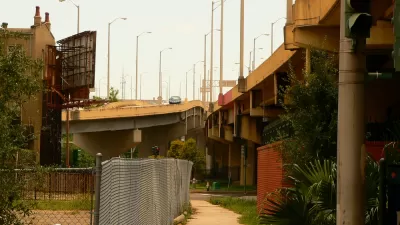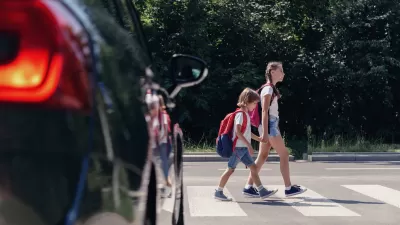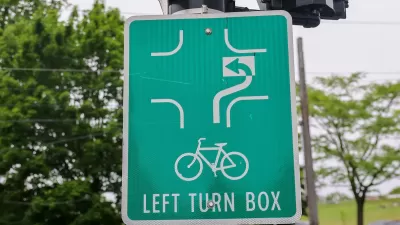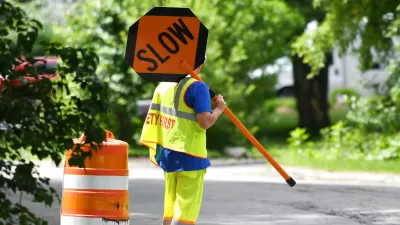Although some cities are in favor of removing or reducing urban freeways in favor of more walkable spaces, guidelines like the 11-year-old MUTCD still encourage a 'throughput at all costs' mentality.

As the movement to remove urban freeways and reconnect neighborhoods gains strength, writes Scott Beyer, Northern Virginia's National Landing provides a sample of the conflict between freeway removal advocates and the state and federal programs that perpetuate freeway building and expansion. "The local business improvement district (BID) wants to convert U.S. Route 1, an elevated highway that divides National Landing’s downtown, into a walkable boulevard with narrower lanes and slower car speeds." But state officials want to keep the road at its current width, citing concerns "that narrowing Route 1 would divert too much traffic to local roads."
In Boston, mobility advocates are calling for "an at-grade reconstruction that is less disruptive than the elevated highway" of the city's Interstate 90 viaduct, but are facing similar opposition from the state's department of transportation, which, according to reports, "may even make the elevated viaduct taller and wider."
The conflict stems in part from the seldom-updated, federal Manual on Uniform Traffic Control Devices (MUTCD), whose guidelines "dictate lane widths, shoulder widths and curve radii, and are written with automobile speed in mind." Because "[h]ighway engineers tend to use a 'level of service' (LOS) metric to determine whether a road has adequate capacity," typical designs focus on prioritizing vehicle speed with little regard to pedestrian or cyclist safety or convenience.
With local residents and businesses on board with less car-centric retrofits of urban freeways, it's time that state and federal DOTs understand "it may be unwise for them to force this 'throughput at all costs' vision onto the urban parts of state and federal routes" when cities are realizing the "tremendous economic and cultural value that is diminished" by reducing roads to simply corridors for moving traffic as efficiently as possible.
FULL STORY: Will States and the Feds Let Cities Tame Urban Highways?

Maui's Vacation Rental Debate Turns Ugly
Verbal attacks, misinformation campaigns and fistfights plague a high-stakes debate to convert thousands of vacation rentals into long-term housing.

Planetizen Federal Action Tracker
A weekly monitor of how Trump’s orders and actions are impacting planners and planning in America.

San Francisco Suspends Traffic Calming Amidst Record Deaths
Citing “a challenging fiscal landscape,” the city will cease the program on the heels of 42 traffic deaths, including 24 pedestrians.

Adaptive Reuse Will Create Housing in a Suburban Texas Strip Mall
A developer is reimagining a strip mall property as a mixed-use complex with housing and retail.

Study: Anti-Homelessness Laws Don’t Work
Research shows that punitive measures that criminalized unhoused people don’t help reduce homelessness.

In U.S., Urban Gondolas Face Uphill Battle
Cities in Latin America and Europe have embraced aerial transitways — AKA gondolas — as sustainable, convenient urban transport, especially in tricky geographies. American cities have yet to catch up.
Urban Design for Planners 1: Software Tools
This six-course series explores essential urban design concepts using open source software and equips planners with the tools they need to participate fully in the urban design process.
Planning for Universal Design
Learn the tools for implementing Universal Design in planning regulations.
Heyer Gruel & Associates PA
JM Goldson LLC
Custer County Colorado
City of Camden Redevelopment Agency
City of Astoria
Transportation Research & Education Center (TREC) at Portland State University
Jefferson Parish Government
Camden Redevelopment Agency
City of Claremont





























